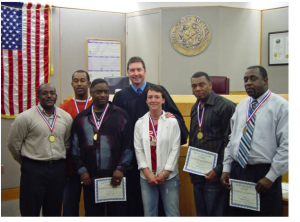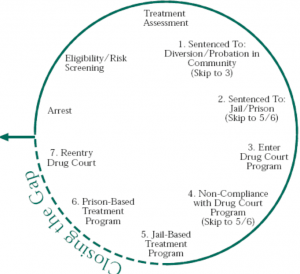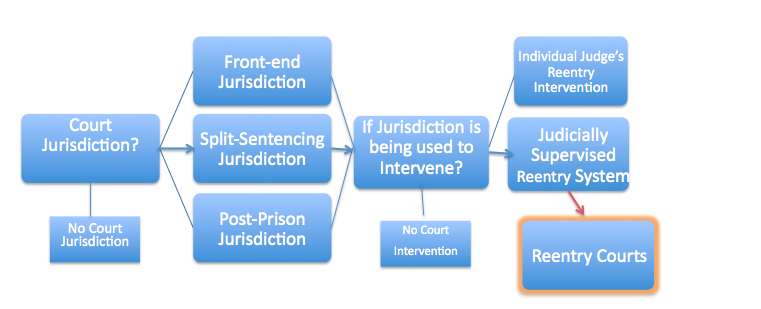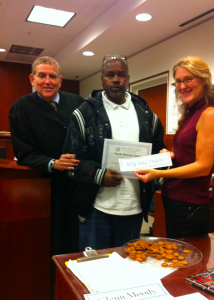June 8th
The NADCP Conference in July will feature a full day of workshops on Reentry Court.
The Reentry Court track that runs five workshops on reentry court topics on Monday July 18th
We are watching a major nationwide trend develop before our eyes; state prisoners returning early and often to local jurisdictions. That pattern can be observed in states such as California where major reforms are being implemented that return parolees to local courts for supervision, parole, and revocation; and in states like Indiana, where state-wide certification already standardizes rules for existing reentry courts This track will take a hard look at how different states are implementing state-wide reentry court systems, both jail and prison based.
Workshop A: 10:15-11:30
Different State Approaches to Reentry Courts: A review of five states that have taken substantially different approaches to the use of the courts in supervising and supporting the reintegration of returning state prisoners into the community.
Moderator: Judge Jeff Tauber (ret.), San Francisco Reentry Court
California; Judge Steven Manley, Santa Clara Reentry Court
Indiana; Mary Kay Hudson, Director of Court Services, Indiana Judicial Center
Missouri; Judge Christine Carpenter, Boone County Reentry Court
New York; Chris Watler, Director, Harlem Justice Center Reentry Court
Ohio; Christine Raffaele, Program Manager, Ohio Supreme Court
Workshop B: 12:30-1:45
Evidence Based Practices in Reentry Courts: A review of the latest research based practices that make a difference in the success of Reentry Courts
Judge Jeffrey Tauber (ret.), San Francisco Reentry Court, CA
Workshop C: 2:00-3:15
The State of Reentry Courts in California:
California has taken a giant step toward the systemization of reentry courts across the state. In addition to six pilot reentry courts that have been in operation for nearly a year, Governor Brown has signed legislation that may in the near future, give county judges primary responsibility to supervise parolees and hold parole revocation hearings.
Judge Richard Vlavianos, San Joaquin Reentry Court
Judge Steven Manley, Santa Clara Reentry Court
Workshop D: 3:30-4:45
Dealing with the new demographic: Returning state prisoners
The local courts are experiencing the return of state prisoners to localities, to finish state prison terms and in some cases , to be supervised and tried for parole revocation before county judges. Learn how working with this new demographic is different.
Moderator: Judge John Creuzot; Dallas TX
Judge Patricia Cosgrove, Akron Reentry court, OH
Kathy Bush: Program Coordinator. San Joaquin Reentry Court. CA
Michael Princivalli, Boone County Missouri Reentry Court Coordinator
Workshop E: 5:00-6:15
The State of Reentry Courts in Indiana
Dealing with almost a dozen reentry courts, Indiana has the largest number of reentry courts in the nation. Additionally, Indiana is a model for developing astate wide systems that require counties to follow state wide rules. Learn from Indiana officials how a state wide, standardized reentry system works.
Moderator: Chris Watler, Director, Harlem Justice Center Reentry Court
Judge Jose Salinas, Indianapolis Reentry Court
Mary Kay Hudson, Director of Court Services, Indiana Judicial Center
Information on the NADCP Conference that runs from Sunday July 17 through Wednesday, July 20th.
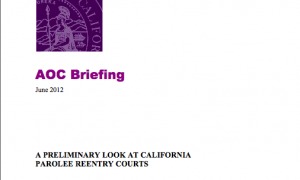 The California Administrative Office of the Courts (AOC) has published a monograph on California Reentry Courts, “A Preliminary Look At California Parolee Reentry Courts” (click on image to the left for the document). The six county programs began in the fall of 2010 and will complete their evaluation period at the end of 2012. All six counties devised substantially different approaches to the high-risk drug and/or mentally ill offenders. who had violated their parole. The federally funded program is being co-administered by the Department of Corrections and Rehabilitation (CDCR) and the AOC). Though the programs have not completed their evaluation periods, the AOC sees the potential for substantial benefits coming out of this program.
The California Administrative Office of the Courts (AOC) has published a monograph on California Reentry Courts, “A Preliminary Look At California Parolee Reentry Courts” (click on image to the left for the document). The six county programs began in the fall of 2010 and will complete their evaluation period at the end of 2012. All six counties devised substantially different approaches to the high-risk drug and/or mentally ill offenders. who had violated their parole. The federally funded program is being co-administered by the Department of Corrections and Rehabilitation (CDCR) and the AOC). Though the programs have not completed their evaluation periods, the AOC sees the potential for substantial benefits coming out of this program.
